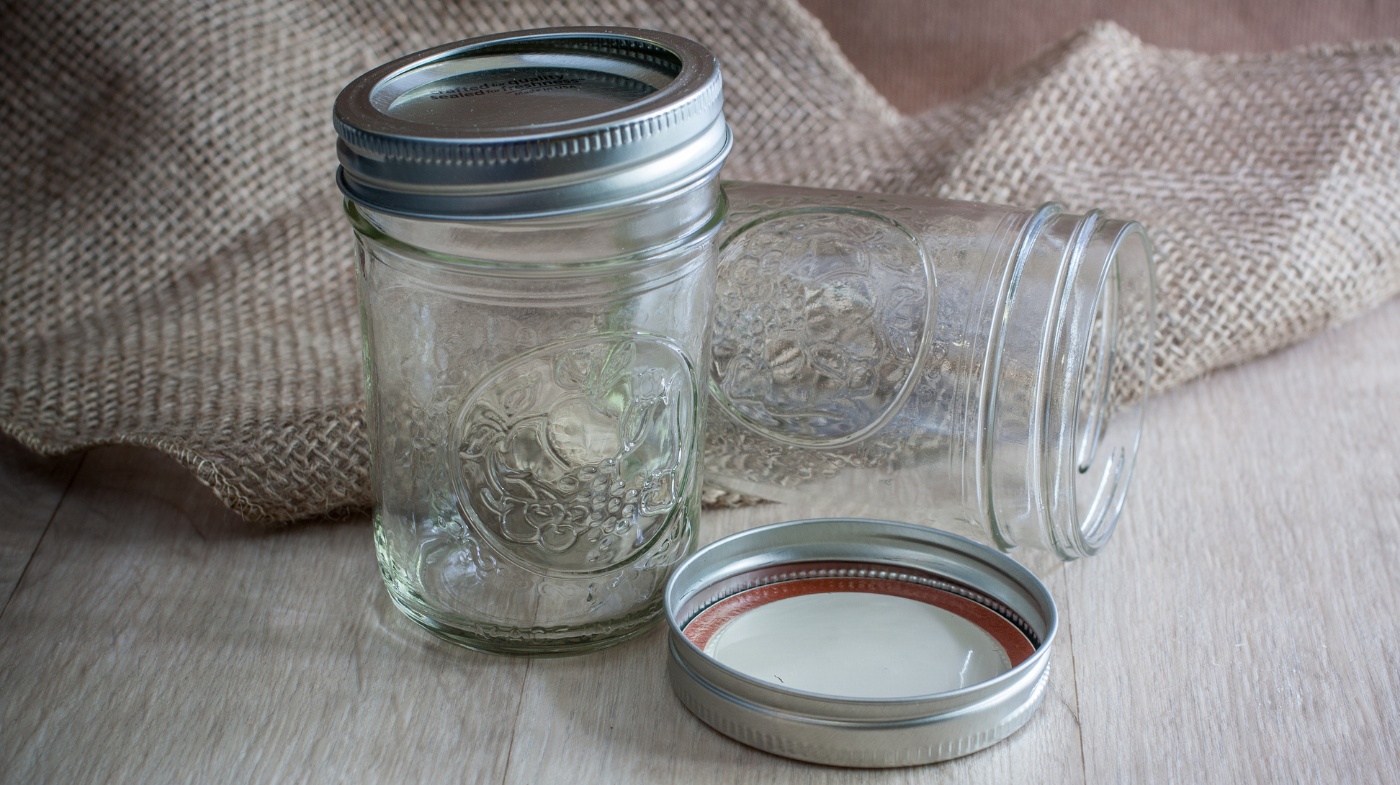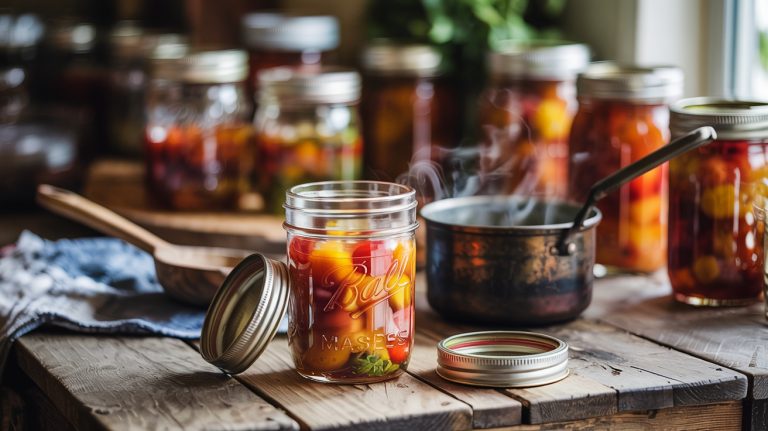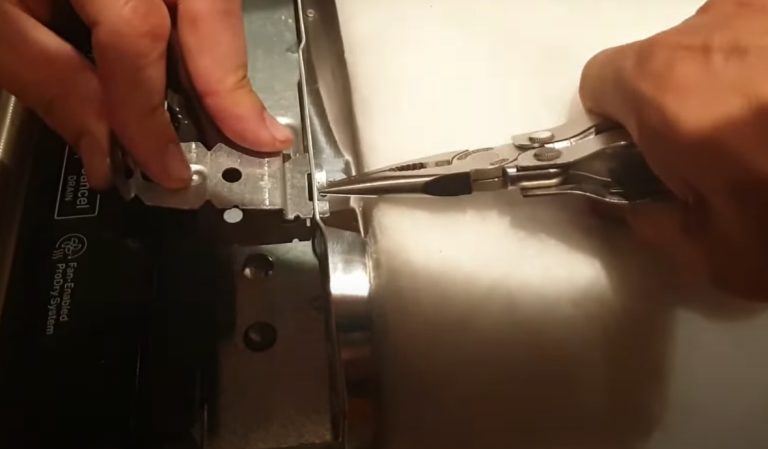How to Remove Mason Jar Lid? Effective Methods to Follow
To remove a stuck mason jar lid, try soaking the jar upside down in warm water to loosen the seal. If that doesn’t work, you can use a hair dryer on low to heat the lid or apply a warm cloth around it.
For better grip, use rubber bands or a silicone trivet. If it’s still stubborn, gently tap around the lid’s threads or try a rubber-ended wrench. Stick around for more tips on preventing future sticking issues.
Key Takeaways
- Soak the jar upside down in warm water to loosen the lid seal effectively.
- Use rubber bands or silicone trivets for better grip when twisting off the lid.
- Apply heat by running hot water over the lid or using a hair dryer to expand the metal.
- Gently tap around the lid’s threads to help break the seal and ease removal.
- If needed, use a jar lid opener or seek professional help for stubborn lids.
Understanding the Problem of Stuck Mason Jar Lids
Dealing with stuck mason jar lids can be incredibly frustrating, especially when you’re keen to access the contents inside. Understanding why lids get stuck is the first step.
Strong vacuum seals or over-tightening can cause your struggle. If you notice food residue or humidity, these factors increase friction and adhesion, making it tougher to open the jar.
Tapping the lid gently can help break the seal, while using tools like a thin screwdriver or pliers can provide extra grip.
Additionally, applying warm water to the lid can significantly aid in loosening it for easier removal. Regularly inspecting and cleaning lids can help prevent rust formation that contributes to the issue as well.
Heating Techniques for Lid Removal
If you’re struggling with a stuck mason jar lid, heating techniques can work wonders. Try running warm water over the lid to expand the metal, or soak the jar upside down for a few minutes to loosen the seal.
You can also use a hair dryer for targeted heat—just make sure to keep it away from the glass. Heating the center of the lid is crucial for effectiveness, so ensure you’re focusing your efforts on that area for the best results.
Additionally, using jars with wide mouth designs can make the process of filling and cleaning easier, potentially preventing future sealing issues.
Warm Water Method
To effectively loosen a stubborn mason jar lid, try the warm water method, which uses heat to expand the metal and break the seal.
Start by placing the jar under hot running water or immersing it in a bowl of hot water. Make sure the lid is submerged for at least 30 seconds to allow the metal to expand sufficiently.
Additionally, coating techniques can be employed as a preventive measure to avoid future sticking issues. Using oxygen absorbers can also help maintain the freshness of your food stored inside the jar, as they remove oxygen from sealed environments that could lead to spoilage.
If you prefer, you can fill a bowl with boiling water, soak a cloth in it, and then apply the warm, moist cloth directly to the lid. This method often works better than dry heat.
If the lid still won’t budge, consider tapping it gently or using additional tools to help. Give it a shot, and you’ll be enjoying your contents in no time.
Hair Dryer Application
After trying the warm water method, you might want to give the hair dryer application a shot for stubborn mason jar lids. This technique uses heat to expand the metal lid, making it easier to twist off.
Aim the hair dryer at the lid for about a minute, ensuring you don’t direct heat at the glass to avoid cracks.
Proper sealing is crucial for maintaining the quality of freeze-dried foods. Additionally, using lids with silicone gaskets can enhance sealing capability and prevent leaks.
| Tools Needed | Tips | Safety Precautions |
|---|---|---|
| Hair Dryer | Use rubber gloves for grip | Avoid overheating glass |
| Gloves or Cloth | Rubber bands can help | Hold jar securely |
| Towel or Rag | Twist gently | Use a towel for spills |
Upside Down Soaking
When you find yourself struggling with a stubborn mason jar lid, trying the upside down soaking method can be a game changer.
First, gather a bowl, boiling water, and a washcloth. Pour the boiling water into the bowl and soak the washcloth for a moment, ensuring it’s hot but not scalding. Wring it out to avoid drips and place it over the lid, covering it completely.
Let it sit for about five minutes to allow the heat to expand the metal and loosen the seal. After soaking, grip the jar securely and twist the lid counterclockwise slowly.
If it’s still stuck, repeat the process, applying heat as needed. Using heat can help break the vacuum seal and make it easier to open the jar. Always be cautious of hot water to prevent burns.
Grip Enhancement Methods
When it comes to enhancing your grip on a stubborn mason jar lid, a few clever tricks can make all the difference. Try wrapping a rubber band around the lid for extra traction, or use a silicone trivet to give you a better hold.
If you’re feeling creative, a piece of duct tape can serve as a makeshift handle, giving you the leverage you need to twist that lid off with ease.
Remember, using a rubber gripper pad can significantly improve your grip and prevent slipping, making the task much easier.
Additionally, employing proper sealing techniques can ensure that the lid is less likely to become stuck in the first place.
Rubber Band Technique
One effective way to improve your grip on a stubborn mason jar lid is by using a rubber band. This simple technique increases friction and gives you the leverage needed to twist off the lid easily.
Self-reliance when home alone can make this method even more valuable, as it empowers you to solve problems independently.
Additionally, using a rubber band can be especially helpful when dealing with airtight sealing features that ensure freshness.
Here’s how to do it:
- Choose a rubber band that’s wide enough for a good grip.
- Wrap it around the lid snugly, possibly multiple times for added traction.
- Make sure the rubber band is centered on the lid for even pressure.
- Keep the band tight to prevent slipping while you twist.
This method works consistently on various types of jars, from pickles to honey. Give it a try, and you’ll find that opening jars becomes a breeze.
Silicone Trivet Usage
If you’re struggling to open a stubborn mason jar lid, using a silicone trivet can make a huge difference. Start by wrapping a silicone trivet around the lid for extra grip.
Its non-slip texture provides a solid hold, preventing your hands from slipping. Additionally, silicone trivets can serve as a reliable tool to enhance your grip due to their heat-resistant and flexible nature.
If that doesn’t work, try soaking the lid in warm water to loosen the seal. You can also use a hair dryer to apply heat, expanding the lid slightly. For added friction, grab a wet towel and give the lid a twist.
Finally, tapping gently around the lid’s threads may help loosen it. With these tips, you’ll be popping open that jar in no time.
Duct Tape Handle
A duct tape handle can be a game-changer when tackling stubborn mason jar lids. This simple technique boosts your grip, making it easier to pop that lid off.
Here’s how to do it:
- Cut a strip of duct tape about one foot long.
- Align the bottom of the tape with the bottom of the lid.
- Wrap the tape around the lid at least one-quarter of the way.
- Fold the first few inches over the lid for better adhesion.
- Consider a double fold for extra support.
With this method, you’ll increase the surface area and gain the traction needed to tackle even the tightest jars. Duct tape is surprisingly effective for un-sticking stubborn lids in this way. You’ll be surprised how effective this simple tool can be.
Mechanical Techniques to Loosen Lids
Mechanical techniques can be incredibly effective for loosening stubborn mason jar lids.
Start by using a can or bottle opener to pry the lid loose; just slip it under the lid and apply gentle pressure. If food residue is causing stickiness, tapping gently around the rim can help.
Additionally, using a jar with a wide mouth design can make filling and cleaning easier, leading to fewer stuck lids.
Use a can opener to pry the lid loose, and gently tap around the rim to loosen any sticky residue.
For better grip, try using a silicone trivet or rubber glove to twist off the lid easily. You can also create a handle with duct tape around the lid for extra leverage.
Many adults struggle with jars, so these techniques can be particularly helpful in overcoming that challenge. If the lid’s still stuck, inverting the jar and striking the base can break the vacuum seal.
Finally, a rubber-ended wrench or sandpaper can enhance your grip, making that stubborn lid budge.
Safety Precautions While Removing Lids
When you’re removing a mason jar lid, make certain you follow some safety precautions to avoid injury or damage. Below are a few tips to ensure a safe and easy process:
Use Protective Gear
Removing lids from mason jars can be tricky, but using the right protective gear makes the process safer and easier.
Equip yourself with essential tools to prevent burns and guarantee a firm grip. Here’s what you’ll need:
- Jar Lifters or Grips: Safely handle hot jars.
- Oven Mitts or Gloves: Protect your hands from burns.
- Rubber Grip Pads: Help turn difficult lids.
- Jar Opener Tools: Ideal for stubborn lids.
- Towel or Cloth Wrap: Improve your grip on the jar. Additionally, remember that removing canning rings allows for immediate detection of seal issues, ensuring food safety before consumption.
Avoid Sharp Objects
Using the right protective gear is important, but it’s equally essential to steer clear of sharp objects while removing mason jar lids.
Sharp tools like knives or prying instruments can’t only damage the lid but also break the glass, leading to potential injuries.
To keep yourself safe, avoid these risky options and opt for gentler methods instead. If you need leverage, use a spoon or another blunt item.
Additionally, warming the lid with warm water or a hair dryer can help loosen it without any risk. To effectively use a spoon, ensure it is positioned correctly for leverage during lid removal.
Ensure Jar Stability
To guarantee jar stability while you’re trying to remove the lid, place the jar on a stable, non-slippery surface. This prevents unnecessary movement and potential accidents. Here are some important safety precautions to keep in mind:
- Keep your workspace clean to minimize distractions.
- Hold the jar firmly with one hand while working on the lid with the other.
- Consider wearing gloves for better grip and hand protection.
- Remove any distractions, like phones or loud music, to maintain focus.
- Use rubberized accessories, like gloves or trivets, to enhance your grip. Additionally, using a damp kitchen towel can provide better grip when twisting the lid.
Tips for Preventing Future Sticking Issues
To prevent future sticking issues with your mason jar lids, it’s essential to adopt a few simple habits. Here are some effective strategies:
| Tip | Description |
|---|---|
| Clean After Use | Regularly clean and dry lids to avoid residue. |
| Apply Oil | Coat threads with vegetable oil to reduce sticking. |
| Store Properly | Keep jars without rings to avoid pressure on seals. |
| Inspect Jars | Regularly check for signs of spoilage or damage. |
| Monitor Temperature | Store jars away from extreme heat or cold. |
Additionally, remember that applying a small amount of oil on jar grooves can effectively prevent crustiness and save you from future frustrations when trying to open sticky jars.
Frequently Asked Questions
Can I Reuse a Damaged Lid After Removal?
You shouldn’t reuse a damaged Mason jar lid for canning, as it can lead to seal failures and food spoilage.
However, if the lid’s merely scratched or dented, you can repurpose it for dry storage or crafty DIY projects. Just make certain to clean and inspect it first. For canning, always opt for new lids to guarantee safety and a proper seal.
What Types of Jars Are Most Prone to Stuck Lids?
You’ll find jars made from lower-quality materials and thinner glass are most prone to stuck lids. Frequent use and exposure to extreme temperatures can exacerbate the issue, too.
Older jars often face lid problems due to wear and tear. Pay attention to the sealing process—over-tightening can lead to difficulties later. Finally, mismatched lid sizes may cause fit issues, making it tough to open your jar when you need it.
Are There Specific Foods That Cause Lids to Stick More?
Yes, certain foods definitely cause lids to stick more. High-sugar items like jams and jellies are notorious for leaving sticky residues. Greasy foods can also create lasting gunk on lids, while acidic foods may alter the lid materials over time.
To prevent stickiness, always clean the jar rim before sealing and avoid over-tightening the lids. This way, you’ll enjoy easier access to your jars when you need them.
How Can I Tell if a Lid Is Truly Stuck or Sealed?
To tell if a lid’s truly stuck or sealed, start by checking for any movement when you twist it. Listen for a hissing sound as you try to open it; that’s a sign of a vacuum seal.
Inspect the lid for deformation or tightness compared to similar jars. If it feels unusually tight, it might be sealed. Finally, look for sticky residue that could be making it seem stuck.
What Are Alternative Methods for Preserving Food Without Jars?
Imagine your kitchen as a treasure trove of flavors waiting to be preserved. You can explore dehydration by drying fruits and veggies, using a dehydrator or an oven.
Fermentation lets you create tangy delights like sauerkraut, full of probiotics. For live storage, think root cellars for keeping fresh produce crisp. Finally, embrace cold storage to slow spoilage and keep your foods vibrant without fancy techniques.
Safely Remove Stubborn Mason Jar Lids and Enjoy Your Preserves with Ease
To sum up, tackling a stuck mason jar lid doesn’t have to be a battle. Think of it like wrestling with a stubborn friend; sometimes, a little warmth and the right grip can turn the tide.
By using the methods we’ve discussed, you can easily reclaim your jar’s contents. Just remember, prevention is key—store your jars in a cool, dry place to avoid future clingy lids. So, don’t let a lid stand in your way—get creative and enjoy your preserves.







